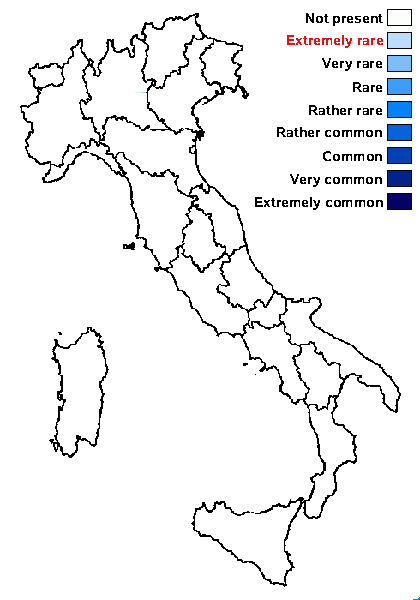Rinodina laxa H.Magn.
Meddel. Göteb. Bot. Trädg., 17: 277, 1947.
Synonyms:
Distribution:
Description: Thallus crustose, episubstratic, granulose, grey to brown, often concealed by the dense apothecia. Apothecia lecanorine, 0.3-0.7 mm across, broadly attached, with a dark brown, concave, flat to convex disc and a persistent thalline margin. Thalline exciple corticate, the cortex 20-30 µm thick, I-; epithecium brown; hymenium colourless, 70-110 µm high; hypothecium colourless, 20-100 µm high. Asci 8-spored, clavate, the K/I+ blue tholus penetrated by a faintly amyloid apical cushion with parallel or diverging flanks, the wall K/I-, surrounded by a K/I+ blue outer layer, Lecanora-type. Ascospores 1-septate, brown, ellipsoid, 18-26 x 8-12 µm, Physconia-type, with an ontogeny of type A (apical wall thickening after septum formation). Photobiont chlorococcoid. Spot tests: cortex and medulla K-, C-, KC-, P-, UV-. Chemistry: without lichen substances. Note: described from neighbouring Engadin in Switzerland, this species may occur also in the Alps of Italy.
Growth form: Crustose
Substrata: soil, terricolous mosses, and plant debris
Photobiont: green algae other than Trentepohlia
Reproductive strategy: mainly sexual

Predictive model
Growth form: Crustose
Substrata: soil, terricolous mosses, and plant debris
Photobiont: green algae other than Trentepohlia
Reproductive strategy: mainly sexual

Predictive model

